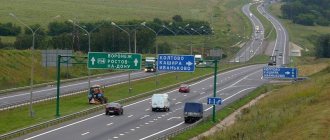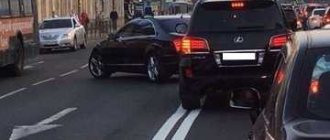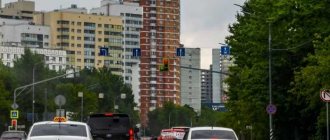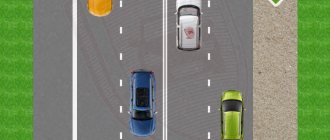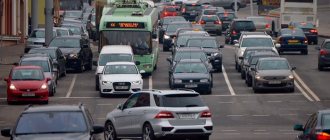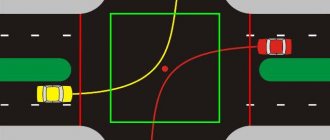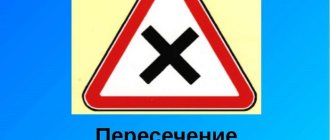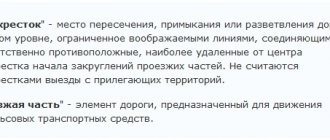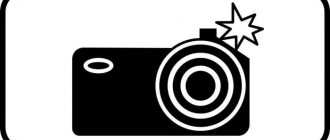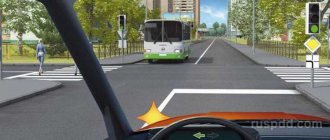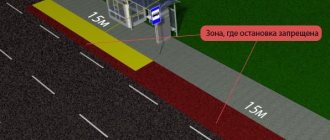What is a reversal
According to the interpretation specified in the traffic rules, a turn is a maneuver, as a result of which the car completely changes the direction of its movement. Moreover, this maneuver can be performed both at the intersection and outside it. A prerequisite for turning around must be good visibility of the road in both directions. In addition, the vehicle making the U-turn must also be within sight of other road users.
Where U-turn is prohibited
In accordance with paragraph 8.11 of the traffic rules, a ban on the right to turn a car is provided for the following areas:
- At pedestrian crossings;
- On bridges and tunnels;
- On overpasses, overpasses, and also under them;
- At railway crossings;
- Where in any direction of movement the roadway is visible for no more than 100 meters;
- At public transport stops.
These places where U-turns are prohibited are by no means random. Making a U-turn on such road sections poses a serious danger both to the driver and passengers of the vehicle making the U-turn, as well as to passengers of other vehicles, as well as road pedestrians.
Another important nuance: when turning, you should never cross the double solid marking line. If it is applied to the road surface, the driver must choose another place to turn around.
You also need to take into account that making a U-turn is strictly prohibited in those places where the “U-turn is prohibited” sign is installed.
Most often, this sign is installed by road services in front of those intersections where the movement of vehicles is difficult or such a maneuver may create a danger for other road users or pedestrians.
By the way, many motorists believe that the “No U-turn” sign also restricts other maneuvers. Actually this is not true. Turning left and driving in a straight line is not prohibited for the driver.
This sign can be installed not only on the right side of the road, but also on the left, as well as on the dividing strip. This is done so that the driver is more vigilant and does not make a U-turn in places where there is a danger for all road users.
In addition to installing a sign prohibiting a U-turn, an additional sign can be installed in conjunction with it, which determines at what distance a U-turn is prohibited.
Also, it is necessary to understand that this sign does not apply to public transport, since it may have a clearly defined route according to which it must move.
Oncoming traffic is prohibited
Clause 9.2 establishes a ban on entering the oncoming lane to overtake or bypass - this list of maneuvers is limited and does not have any allowances for avoiding obstacles, even if this is impossible within the oncoming lane. In this case, it is impossible to bypass the obstacle without violating the Traffic Rules. Moreover, the presence or absence of markings does not matter. However, such a violation of the Rules will not entail an administrative offense, that is, it is unlawful to fine for such a violation.
Avoiding obstacles is prohibited by the Rules
It is possible to organize traffic in the oncoming lane on roads with dividing strips or tram tracks (more about tram tracks in the commentary to the term “Roadway”). For this purpose, road signs 6.19.1 or 6.19.2 are used - “Preliminary indicator for changing lanes onto another roadway.”
Organized departure into the oncoming lane
Where and how is a U-turn allowed?
The current version of the traffic rules states that U-turns are allowed both at intersections and free sections of the road outside intersections.
If there is no dividing strip on the roadway, you can make a U-turn in those places where there is no continuous marking line. On a road with several lanes in each direction, you need to find a special place to turn around. It is usually designated by 6.3.1 or 6.3.2. If these signs are not installed, the driver can navigate along the broken road marking line.
Dear reader! Didn't receive an answer to your question? Our expert lawyers work for you. It's absolutely free!
- Moscow ext 152
- St. Petersburg ext 152
- All regions ext 132 (Toll free)
As for the procedure for turning around at an intersection, this maneuver must be performed taking into account the requirements of Chapter 13 of the current edition of the traffic rules. It is she who reveals the order in which movement occurs at the intersection. It is important to understand that a U-turn at an intersection must be made only from the far left lane
In a situation where the turning maneuver must be performed not at an intersection, the driver must refer to rule 8.8. This clause specifies that a turn must be made from the extreme left lane, and if the road also contains tram tracks running in the middle of the road, then the turn must be made from the rails running in the same direction.
In addition, we must not forget that the driver of a vehicle making a U-turn must allow all oncoming vehicles to pass. If the turn is made through tram tracks, you will also need to pass passing and oncoming trams.
In some cases, the width of the roadway may not be sufficient to perform a classic U-turn from the leftmost lane. Thus, the vehicle will interfere with those cars that need to give way. For such situations, clause 8.8 provides an exception, thanks to which it is allowed to start a turn not from the extreme left position, but from the extreme right or from the right shoulder. In this case, the driver must give way to all passing and oncoming vehicles. The driver must wait for the appropriate moment and only then make a U-turn. Thus, no interference will be created for other traffic participants and the turn will be completed successfully.
A similar turning option is allowed for various long vehicles, the dimensions of which do not make it possible to make a turn from the leftmost lane.
But none of the traffic rules gives you the right to make a U-turn from the middle of the road. Therefore, when approaching an intersection, if it is necessary to make a U-turn, the driver of the car must take the extreme left position on the road. If the turn is not made at an intersection, then you need to take one of the two extreme positions on the roadway.
If the driver needs to make a U-turn when approaching a roundabout, then this maneuver is allowed only after the middle of the intersection has been detoured.
Selecting a lane to turn (turn)
It is important to know!
Before turning right, left or making a U-turn, the driver must take the appropriate extreme position in advance on the roadway intended for traffic in this direction.
On multi-lane roads, turns and U-turns are made as follows:
- turn right - from the far right lane to the far right lane of the transverse road;
- turn left and turn - from the leftmost lane to any lane intended for traffic in a given direction (not to the oncoming lane!)
Driving straight ahead can be done from any lane, including the far right and the far left.
You can deviate from this rule in two cases:
1. If there are signs 5.15.1, 5.15.2 “Directions of traffic along lanes” or markings 1.18 at the intersection - in accordance with their requirements.
On such signs or markings, an arrow indicating a left turn also allows a U-turn. However, regardless of the presence of “Lane Directions” signs or markings 1.18, a turn at an intersection can only be made from the leftmost lane. This requirement must also be observed if there are arrows allowing left turns to be made simultaneously from several lanes.
2. When entering a roundabout intersection. You can enter such an intersection from any lane in the same direction. However, leaving it should only be done from the extreme right position.
In places where the road turns into the adjacent territory, “Lane Directions” signs are not installed and markings 1.18 are not applied. Therefore, in such places you should always turn right or left, respectively, from the extreme right or from the extreme left position.
Before any turn or U-turn, it is not enough to be in the correct lane. To turn right, you must take a position on this lane so that no one, not even a bicycle or motorcycle, is to the right of your vehicle.
Before turning left and making a U-turn, you need to make sure that no one is in your lane to the left of your vehicle. When starting a maneuver, you must additionally verify this by looking in the outside rearview mirror.
If the driver of a long or large vehicle cannot perform a maneuver from the extreme right or extreme left position, he is allowed to deviate from this requirement without interfering with other road users.
It is important to know!
The turn must be made in such a way that when leaving the intersection of roadways, the vehicle does not end up in the lane of oncoming traffic.
When turning right, you should stick to the right edge of the roadway. When turning left, in order to avoid ending up in the oncoming lane, you should not “shortcut” the trajectory at the intersection of roadways.
What signs prohibit turning a car?
The main sign that prohibits a U-turn maneuver is the “No U-turn” sign. It consists of a black arrow crossed out with a red stripe on a white background with a red border. The “No U-Turn” sign itself is round in shape.
Most often, this sign is installed at intersections and prohibits a U-turn maneuver at this particular intersection. At all subsequent intersections, it is possible to make a U-turn if a prohibition sign is not installed in front of them.
In addition to the above sign, there is a whole series of them prohibiting making a U-turn in a certain area of traffic. Thus, the list of road signs that do not provide for the ability to make a U-turn includes:
- Those that indicate the presence of a pedestrian crossing;
- Notifying about approaching the entrance to the tunnel;
- Indicating a railway crossing located ahead;
- Those that notify that there is poor visibility on the road ahead;
- Informing about the location of vehicle stops;
- Signs that indicate continuous single or double markings applied.
But there are no separate special signs that would allow a U-turn on a certain section of the road. There are other signs indicating permissible directions of movement, but the “Turning is allowed” sign is not in the traffic rules.
Turn left (U-turn) on a road with tram tracks
If on the road from which you want to turn left or turn around, there are tram tracks located on your left at the same level as the roadway, then you must follow the following rules :
- If there are signs 5.15.1, 5.15.2 “Directions of traffic along lanes” or markings 1.18 at the intersection, left turns and U-turns are made without changing lanes onto the tram tracks, from the lane of the roadway to which the arrow on the sign (marking) points.
- In the absence of signs “Directions of movement along lanes” or markings 1.18, left turns and U-turns are made from tram tracks in the same direction. You must change lanes shortly before the turning point, leaving the leftmost lane free for you to go straight.
It is important to know!
In any case, both when driving along tram tracks and when crossing them during a left turn or U-turn, drivers of trackless vehicles should not interfere with the tram.
This means that you can perform maneuvers on tram tracks only when they are clear of an approaching tram at a sufficient distance.
